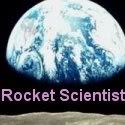The Last Hubble Mission Part 3
>> Tuesday, May 26, 2009

So, what exactly did all that hard work buy us on the Hubble Space Telescope?
Today, let's talk about the science instruments.
Well, the Hubble Space Telescope was in pretty tough shape. You can see a layout of the key HST systems here.
NICMOS
The Hubble's science instrument complement included a NICMOS (Near Infrared Camera and Multi-Object Spectrograph). Installed originally on SM-2, an unexpected thermal expansion required the cooler installed on SM-3B. This cooler was a non-trivial task, effectively squeezing a complex system into a space that wasn't expecting anything. The clever and innovative design worked, though.
Unfortunately, a required shutdown for a software upgrade in September of last year still hasn't been recovered as the NICMOS has stubbornly refused to restart for any appreciable time. Another attempt after SM-4 will likely be attempted. This unit was not repaired during SM-4 and its future is uncertain.
STIS
The STIS (Science Telescope Imaging Spectograph) which was installed when the NICMOS was installed, had a recent failure of a 5 volt power supply. One task set (and accomplished) for SM-4 was the replacement of the computer board with the 5 V power supply. An EVA computer board repair was another of those repairs that were never envisioned for the HST. Computer boards are inherent sharp edges and opening the the cover to get to the board required removal of 111 screws - non-captive fasteners.
Now, for those of you that don't know, captive fasteners are generally used for EVA because, even when you remove an item, the fastener stays in place. That way bolts and screws and nuts and what-have-you don't float out into space to return later as projectiles and make sure that all the fasteners needed for a piece of hardware are available during reinstallation.
In order to perform this repair, a special plate was designed that would allow capture of all the screws. Then the board was replaced and a modified cover was installed in the original cover's place, one that required only two levers for installation instead of 111 screws. I think you begin to see the advantages of the work done on the ground to make these EVAs easier. This EVA was performed and tests are ongoing to hopefully allow this valuable instrument, the first instrument to detect the spectrum of the atmosphere of an extrasolar planet, return to work.
ACS
The ACS (Advanced Camera for Surveys) also had failed. Electronic issues on both redundant sides left the ACS with only a single channel and two of its modes unavailable. Since there isn't time to replace the failed electronics, the hope is that the wiring is intact and a new power supply will be tied to the existing system. The intent is to replace four computer boards with new ones. The new boards are pre-installed into a cartridge that will go into the spot vacated by the removed boards. The cartride simplifies installation and the smaller boards are of a new type that can be reconfigured remotely to tweak the system for the best use of the ACS instrument. The integrated circuit board design is the same sort of system planned for the James Webb Telescope.
COS
Replacing the corrective optical package (that none of the instruments currently need) will be a new instrument, COS (Cosmic Origins Spectrograph). Intended to complement the STIS (if the repair is successful), this is one of the more straight-forward EVA tasks as these instruments were intended to be replaced and, in fact, this was installed on HST SM-1.
FGS
The Fine Guidance System (FGS) has been replaced repeatedly and will be replaced with an refurbished and upgraded unit. This unit is not only an astronomical instrument, it is also part of the fine pointing system for the complex spacecraft. It's a tricky and bulky instrument to replace, but it was also designed for EVA and replacement was done with existing tools and procedures.
WFC-3
Finally, the primary camera, the Wide Field Planetary Camera-2 will be replaced with a lovely new instrument, the Wide Field Camera-3, that is more accurate and stunning than the two previous versions. It's a tricky activity to replace this camera, much like replacing the FGS, but it was also designed for replacement and the task was readily done.
So, how much of this science upgrade, repair was completed on SM-4? All of them. The WFC-3 was installed on EVA-1. The COS was installed and the ACS repaired on EVA-3. STIS was repaired on EVA-4 and the Fine Guidance Sensors were installed on EVA-5.
And, hey, that's not even counting all the other spacecraft repairs they did. I'll tell you about them tomorrow.





.jpg)











.jpg)



I've been seeing a lot of space talk in the news... exciting stuff.
Davida
Thanks so much Stephanie for doing this Hubble series, very informative. The Hubble is so important to help us understand more about our cosmos, ie, the expansion rate and age more accurately of our universe, very cool stuff.